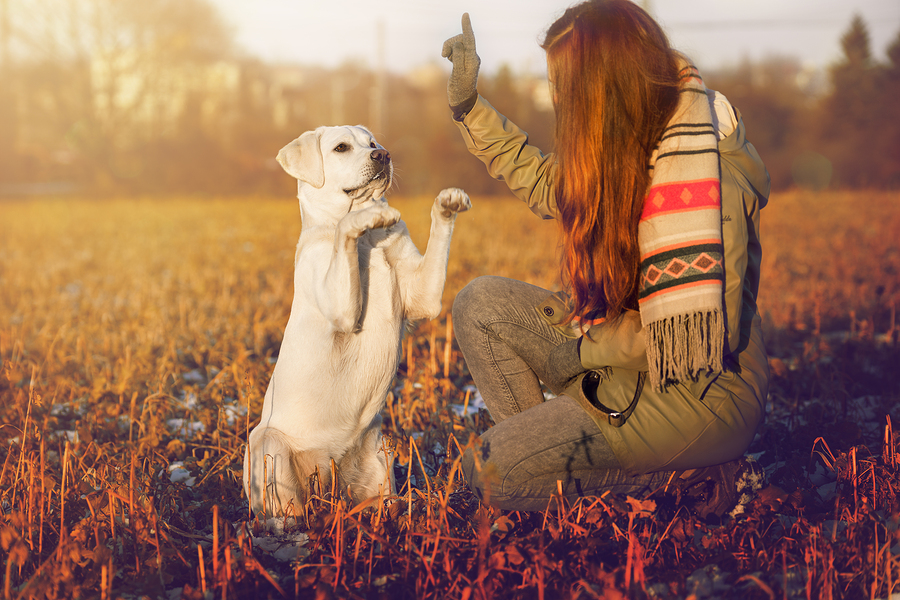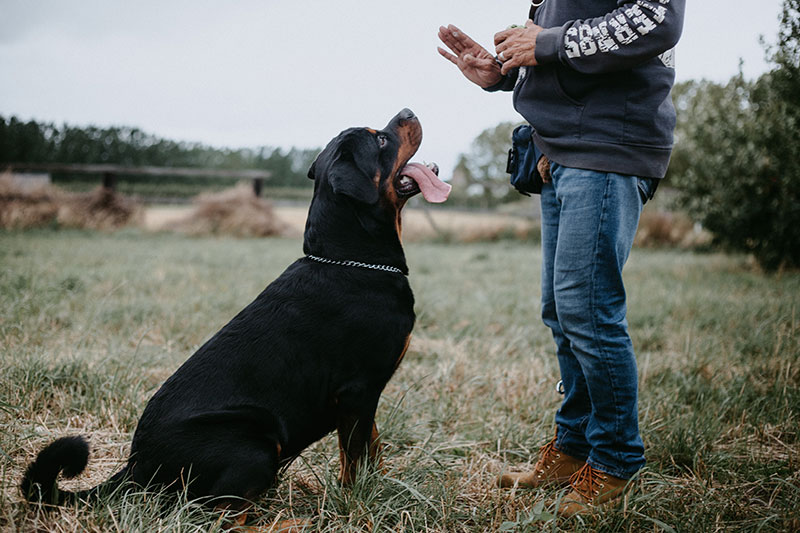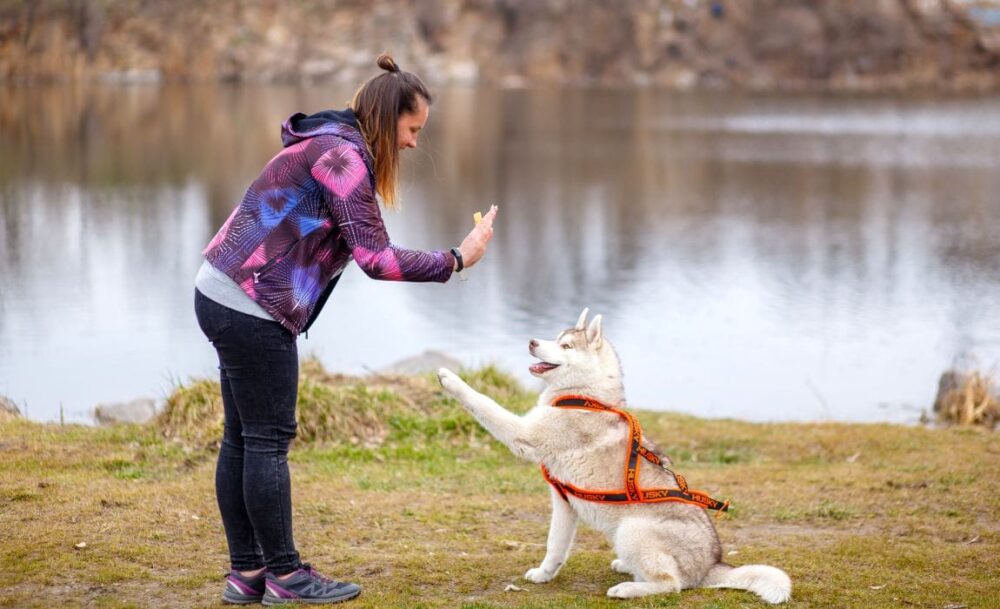Do you have a naughty pup causing chaos at home? Constantly barking, tugging, and misbehaving? Well, obedience training just might be the answer to improving your dog’s behavior. With the right guidance, you can teach your pup good habits and break bad ones.
Understanding Bad Habits in Dogs

Source: dogingtonpost.com
Bad habits are any behaviors performed by a dog that is undesirable or cause harm. They can range from barking, jumping, chewing, and pacing to aggression, aggressive play, and even unprovoked biting. It is important to recognize the motivation for these types of behaviors as well as their triggers in order to take steps to stop or reduce their frequency or intensity.
All behavior has a purpose; whether it is good or bad depends on the situation and context of it. Dogs may perform certain behaviors because they find them rewarding – like chewing on furniture that tastes good – or has learned that these actions lead to rewards – like barking when they want attention. It is important to understand why your dog is performing certain behaviors in order to design an effective obedience training plan.
The Basics of Obedience Training

Source: fetchpetcare.com
Obedience training is a vital part of having a well-behaved dog. The goal of obedience training in any good dogs training camp is to teach your canine companion how to properly respond to commands and strengthen the bond between you and your pet. It is important to work with your dog on a consistent basis in order to keep them on track.
The key components of obedience training include communication, discipline, consistency, and repetition. When you are working with your pup, they should be able to understand what you want from them. This can be done through hand signals as well as verbal commands. Being consistent when working with them will help create strong communication; repeating commands multiple times will reinforce what is being taught and ensure that your pup learns the proper behavior expected from them.
Discipline is also an important factor in obedience training; by clearly establishing the rules for behavior and consistently correcting misbehavior, your pup will learn the expectations for good behavior set by you or a professional trainer. Rewards are also necessary for good behavior – treats such as dog toys or treats can be used both for reinforcement of positive behaviors and as a reward when commands have been followed successfully!
Different Training Methods

Source: labradortraininghq.com
Training your dog with consistent and humane approaches will produce the best results. Obedience training can range from simple commands like “sit” to more complex behavior modification techniques that address stubborn issues such as aggression, destructiveness, and fear. The following are some of the most popular approaches to obedience training that every owner should consider.
Positive Reinforcement
Positive reinforcement is an approach based on rewarding desired behavior with treats or verbal praise. To teach a command or action, the desired action must be performed immediately after providing a reward in order for the animal to make a connection between the two actions. Eventually, verbal praise may be substituted for treats as the ideal reward because it reinforces the bond between the pet and the owner.
Counter-Conditioning
Counter-conditioning is a type of obedience training that works by associating undesirable behaviors with positive stimuli in order to gradually reduce their occurrence over time. For example, if your dog has developed an aversion towards visitors, you may use counterconditioning by consistently introducing treats during visits which may eventually help create a more welcoming response towards visitors over time.
Clicker Training
Clicker training is very similar in principle to positive reinforcement — rewards are given after desired behaviors — but utilizes a small mechanical clicker device instead of treats or verbal praise as rewards. The sound made by clicking devices can be used to instruct dogs on when their behaviors are acceptable and can be used beyond commands and tricks to modify behavior in general.
Compulsion Training
Compulsion training uses restraints combined with positive reinforcement in order to achieve compliance from a dog who is resistant to traditional obedience commands. This form of obedience instruction should only be employed under the advice of an experienced professional trainer due to its potential risks associated if not employed correctly.
Overcoming Common Challenges

Source: forbes.com
One of the most common challenges faced in obedience training is becoming too repetitive with commands and not providing enough variety in learning activities. This can make training dull for dogs who quickly become disinterested or discouraged with too much repetition. To overcome this challenge, focus on keeping regular lessons fresh by mixing up different activities and introducing new commands as your pup masters old ones.
Another issue involves the consistency of routine or reward systems during obedience training. Dogs thrive on having a predictable routine, so treats must always accompany good behavior while mistakes should not be rewarded with treats but with positive punishment such as verbal career correction or removal of attention until good behaviors are demonstrated again
It’s also important to use only consistent words when giving commands such as “sit” or “lie down” because animals tend to confuse differing terms otherwise. If a pup associates two separate words meaning the same command then they will become confused when trying to recall which command they know corresponds with which word they heard last time they were trained.
Conclusion: Taking the Next Steps

Source: petsbest.com
Now that you understand the basics of obedience training, it is important to put your newfound knowledge into action. Research to identify a reputable and qualified certified dog trainer in your area who also offers group classes or private lessons. Understanding your dog’s breed and individual personality can provide insights into how he responds to different approaches as well.
Before enrolling in an obedience class, consider speaking with a trainer beforehand so you can meet them, discuss the class structure and ask any questions that you may have. Make sure that the curricula used will help you on your path towards correcting undesirable behavior in your pet while remaining respectful of his training style and progress.
Ultimately, obedience training is a long-term commitment but it is an important part of developing an understanding between you and your pet as well as ensuring he is receiving adequate exercise and mental stimulation. With patience, consistency, and a positive attitude toward learning, both of you are sure to find success!























